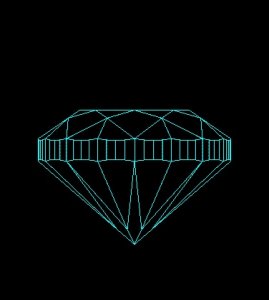- Joined
- Oct 21, 2004
- Messages
- 5,096
This thought keeps popping into my mind every-time I measure extra long shaped Diamonds... (especially small sizes 0.01 to 0.15 ct.).
I am highlighting smalls as the girdle plane of a small Diamond has a significantly bigger impact on the depth vs. bigger sized Diamonds.
Naturally..., the longer the shape of the Diamond, the deeper the depth because common practice for measuring depth % is (depth mm. divided by width mm.)
I just finished cutting very long shapes (radically long) and noticed the depth are averaging well above 70% (even close to 80%)..., the Diamonds are very pretty looking but the numbers are not... (dealers who are concerned about #''s cant understand the depth factor on these type of stones.)
Shouldnt we take the length of radically long shapes into consideration when calculating depth%???
I would like to hear some opinions from the experts on this issue...
Thanks,
I am highlighting smalls as the girdle plane of a small Diamond has a significantly bigger impact on the depth vs. bigger sized Diamonds.
Naturally..., the longer the shape of the Diamond, the deeper the depth because common practice for measuring depth % is (depth mm. divided by width mm.)
I just finished cutting very long shapes (radically long) and noticed the depth are averaging well above 70% (even close to 80%)..., the Diamonds are very pretty looking but the numbers are not... (dealers who are concerned about #''s cant understand the depth factor on these type of stones.)
Shouldnt we take the length of radically long shapes into consideration when calculating depth%???
I would like to hear some opinions from the experts on this issue...
Thanks,





















300x240.png)